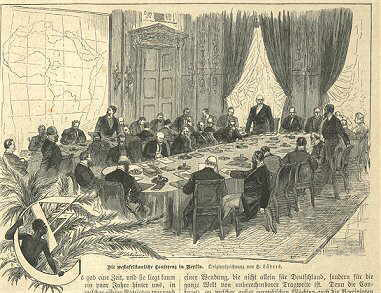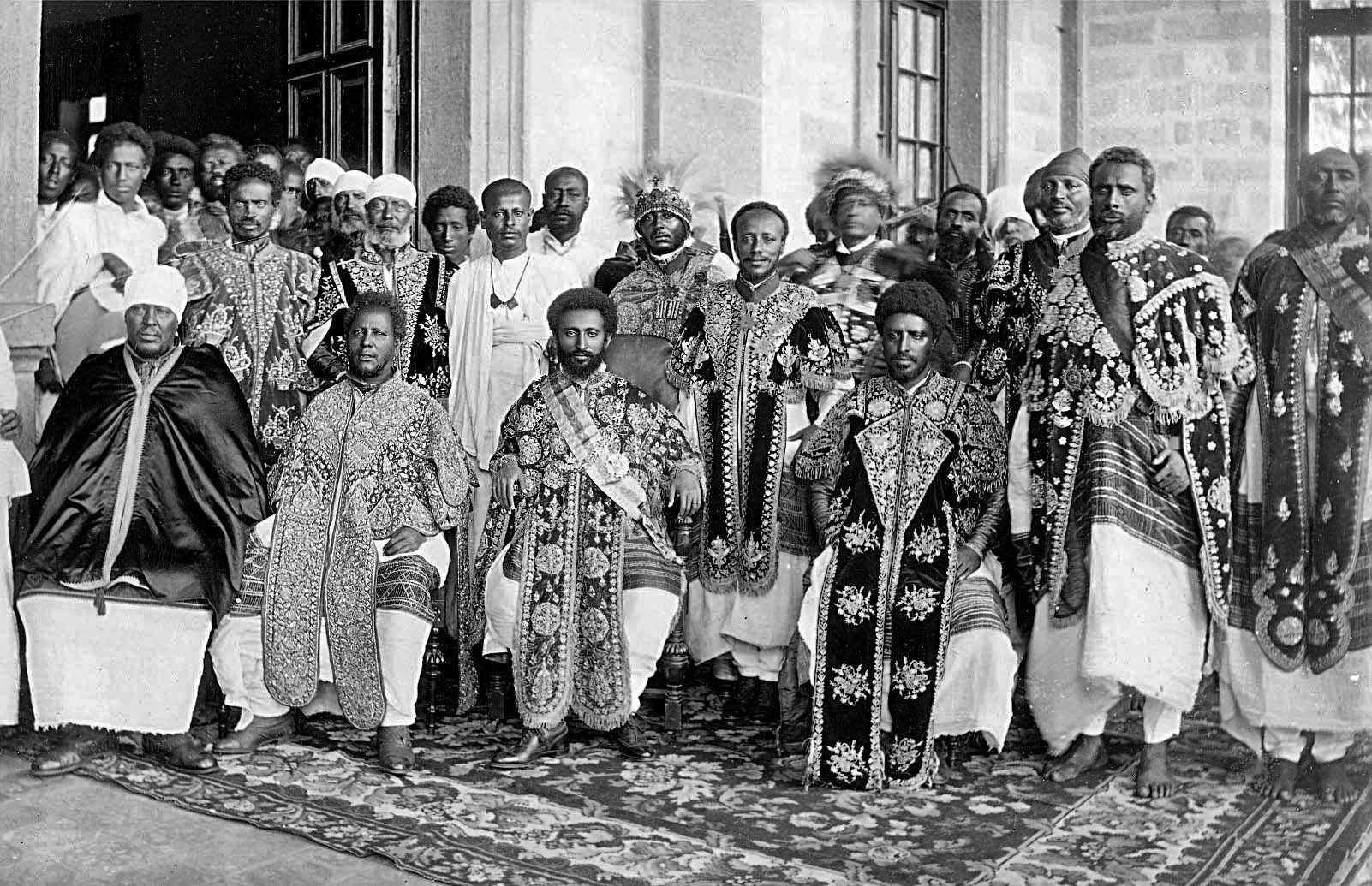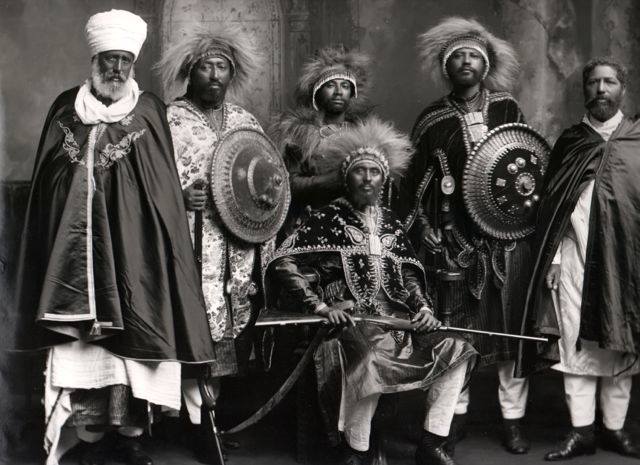|
Battle Of Adwa
The Battle of Adwa (; ; , also spelled ''Adowa'') was the climactic battle of the First Italo-Ethiopian War. The Ethiopian army defeated an invading Italian and Eritrean force led by Oreste Baratieri on March 1, 1896, near the town of Adwa. The victory, aided by vastly superior numbers, decisively thwarted the Kingdom of Italy's attempt to expand its colonial empire in the Horn of Africa. As a result, by the end of the 19th century Ethiopia was the only independent country left in Africa, which had otherwise been carved up by European powers following the Berlin Conference. Adwa became a pre-eminent symbol of pan-Africanism and secured Ethiopian sovereignty until the Second Italo-Ethiopian War forty years later. Background In 1889, the Italians signed the Treaty of Wuchale with King Menelik of Shewa. The treaty, signed after the Italian occupation of Eritrea, recognized Italy's claim over the coastal colony. In it, Italy also promised to provide financial assistance and mil ... [...More Info...] [...Related Items...] OR: [Wikipedia] [Google] [Baidu] |
First Italo-Ethiopian War
The First Italo-Ethiopian War, also referred to as the First Italo-Abyssinian War, or simply known as the Abyssinian War in Italy (), was a military confrontation fought between Kingdom of Italy, Italy and Ethiopian Empire, Ethiopia from 1895 to 1896. It originated from the disputed Treaty of Wuchale, which the Italians claimed turned Ethiopia into an Italian protectorate, while the Ethiopians claimed that the treaty simply ensured peace between the two powers. Full-scale war broke out in 1895, with Italian troops from Italian Eritrea achieving initial successes against Tigrayan warlords at battle of Coatit, Coatit, battle of Senafe, Senafe and Battle of Debra Ailà, Debra Ailà, until they were reinforced by a large Ethiopian army led by Emperor Menelik II. The Italian defeat came about after the Battle of Adwa, where the Army of the Ethiopian Empire, Ethiopian army dealt the outnumbered Royal Italian Army, Italian soldiers and Royal Corps of Eritrean Colonial Troops, Eritrean as ... [...More Info...] [...Related Items...] OR: [Wikipedia] [Google] [Baidu] |
Berlin Conference
The Berlin Conference of 1884–1885 was a meeting of colonial powers that concluded with the signing of the General Act of Berlin,''The Belgian Congo and the Berlin act'' by Keith, Arthur Berriedale, 1919, p. 52. an agreement regulating European colonisation and trade in Africa during the period. The conference of fourteen countries was organised by |
Battle Of Amba Alagi (1895)
The Battle of Amba Alagi was the first in a series of battles between the Italian General Baratieri and Ethiopia's Emperor Menelik during the First Italo-Ethiopian War. Amba Alagi was one of Baratieri's forward positions; it was under the command of Major Toselli with 2,000 Eritrean Askari. On 7 December 1895, the Ras Makonnen, Fitawrari Gebeyehu and Ras Mengesha Yohannes commanded an assault of Menelik's vanguard that annihilated the Italians and killed Major Toselli. The Ethiopians attacked a force of 350 Eritrean irregulars on the left flank, who collapsed under the Ethiopian assault, causing Toselli to send two companies of Italian infantry who halted the Ethiopian advance. Just as Toselli was rejoicing in his apparent victory, the main Ethiopian assault came down on his right flank, causing Toselli to order retreat. The Emperor's best general, Ras Makonnen, had occupied the road leading back to Eritrea, and launched a surprise attack, which routed the Italians. The Eth ... [...More Info...] [...Related Items...] OR: [Wikipedia] [Google] [Baidu] |
Fitawrari Gebeyehu
Until the end of the Ethiopian monarchy in 1974, there were two categories of nobility in Ethiopia and Eritrea. The Mesafint ( , modern transcription , singular መስፍን , modern , "prince"), the hereditary royal nobility, formed the upper echelon of the ruling class. The Mekwanint ( , modern , singular መኰንን , modern or , "officer") were the appointed nobles, often of humble birth, who formed the bulk of the aristocracy. Until the 20th century, the most powerful people at court were generally members of the ''Mekwanint'' appointed by the monarch, while regionally, the ''Mesafint'' enjoyed greater influence and power. Emperor Haile Selassie greatly curtailed the power of the ''Mesafint'' to the benefit of the ''Mekwanint'', who by then were essentially coterminous with the Ethiopian government. The ''Mekwanint'' were officials who had been granted specific offices in the Abyssinian government or court. Higher ranks from the title of ''Ras'' descending through to ''B ... [...More Info...] [...Related Items...] OR: [Wikipedia] [Google] [Baidu] |
Battle Of Coatit
The Battle of Coatit was fought on 13 January 1895 between Italy and Ethiopian proxies led by Tigrayan Prince Ras Mengesha Yohannes in what is now Eritrea Eritrea, officially the State of Eritrea, is a country in the Horn of Africa region of East Africa, with its capital and largest city being Asmara. It is bordered by Ethiopia in the Eritrea–Ethiopia border, south, Sudan in the west, and Dj .... It was the opening battle of the First Italo–Ethiopian War, and was a significant victory for the Italians, as they rebuffed an invasion force. Background By 1894, the relationship between the Italian colonialists and the Ethiopians had become strained. Ethiopian emperor Menelik had repudiated the Treaty of Wuchale, and was consolidating his power with plans to oust the Italians. Former Italian allies, the Tigrayans warlords Ras Mengesha Yohannes, Ras Alula and Bahta Hagos traveled to Addis Ababa to seek forgiveness from the Negus for their dealings with the colo ... [...More Info...] [...Related Items...] OR: [Wikipedia] [Google] [Baidu] |
Mengesha Yohannes
''Ras'' Mengesha Yohannes (; 1868 – 1906) was governor of Tigray and a son of Emperor Yohannes IV (r. 1872–89). His mother was Welette Tekle Haymanot wife of ''dejazmach'' Gugsa Mercha. ''Ras'' Araya Selassie Yohannes was his younger half brother. Prior to the Battle of Metemma, Mengesha Yohannes was considered to be a nephew of Emperor Yohannes IV. During the battle, the Emperor was mortally wounded and it was on his deathbed that Mengesha Yohannes was acknowledged as his "natural" son and designated as his heir. This created something of a succession problem. Fighting between various relatives of the slain Emperor split his camp and prevented Mengesha from making a viable bid for the Imperial throne. Instead, the throne was assumed by ''Negus'' Menelik of Shewa. ''Ras'' Mengesha refused to submit to Menelik and later even flirted with joining the new Italian colony of Eritrea. He hoped that the Italians would support his rebellion against Emperor Menelik. However, en ... [...More Info...] [...Related Items...] OR: [Wikipedia] [Google] [Baidu] |
Ethiopian Aristocratic And Court Titles
Until the end of the Ethiopian Empire, Ethiopian monarchy in 1974, there were two categories of nobility in Ethiopia and Eritrea. The Mesafint ( , modern transcription , singular መስፍን , modern , "prince"), the hereditary royal nobility, formed the upper echelon of the ruling class. The Mekwanint ( , modern , singular መኰንን , modern or , "officer") were the appointed nobles, often of humble birth, who formed the bulk of the aristocracy. Until the 20th century, the most powerful people at court were generally members of the ''Mekwanint'' appointed by the monarch, while regionally, the ''Mesafint'' enjoyed greater influence and power. Emperor Haile Selassie greatly curtailed the power of the ''Mesafint'' to the benefit of the ''Mekwanint'', who by then were essentially coterminous with the Ethiopian government. The ''Mekwanint'' were officials who had been granted specific offices in the Abyssinian government or court. Higher ranks from the title of ''Ras'' descendi ... [...More Info...] [...Related Items...] OR: [Wikipedia] [Google] [Baidu] |
Pietro Toselli
Pietro Toselli (22 December 1856 – 7 December 1895) was a major of the Royal Italian Army. He is mainly known for his participation in the First Italo-Ethiopian War. He was born in Peveragno in 1856, the youngest of three siblings. His father was Giovanni Maria Toselli, and his mother Teresa (Botasso) Toselli. His older brother Enrico Toselli was a noted psychiatrist and university professor. Pietro Toselli joined the army at a young age and was commissioned second lieutenant of artillery in 1878. After finishing the tree year curriculum for artillerymen he opted for additional training in military engineering. After finishing his education in 1880 he became a first lieutenant. In 1887 he was promoted to captain. He first came to Africa in 1888 to carry out topographical work in the new colony of Italian Eritrea. Returning to Italy he published the book ''Pro Africa italica'' under the pseudonym "Un Eritreo". In 1894 he returned to Italian Eritrea to take command of the 4th A ... [...More Info...] [...Related Items...] OR: [Wikipedia] [Google] [Baidu] |
Eritrea
Eritrea, officially the State of Eritrea, is a country in the Horn of Africa region of East Africa, with its capital and largest city being Asmara. It is bordered by Ethiopia in the Eritrea–Ethiopia border, south, Sudan in the west, and Djibouti in the southeast. The northeastern and eastern parts of Eritrea have an extensive coastline along the Red Sea. The nation has a total area of approximately , and includes the Dahlak Archipelago and several of the Hanish Islands. Hominid remains found in Eritrea have been dated to 1 million years old and anthropological research indicates that the area may contain significant records related to the evolution of humans. The Kingdom of Aksum, covering much of modern-day Eritrea and Tigray Region, northern Ethiopia, was established during the first or second century AD.Henze, Paul B. (2005) ''Layers of Time: A History of Ethiopia'', . It adopted Eritrean Orthodox Church, Christianity around the middle of the fourth century. Beginning in ... [...More Info...] [...Related Items...] OR: [Wikipedia] [Google] [Baidu] |
Bahta Hagos
Bahta Hagos ( Ge'ez: ባህታ ሓጎስ; died December 19, 1894), was Dejazmach of Akkele Guzay, and retrospectively considered an important leader of Eritrean resistance to foreign domination, and led a rebellion against the Italians at the Battle of Halai. Early career He was born sometime between 1839 and 1850 into a rich peasant family in the town of Segheneyti, Akele Guzay. Bhata's parents, Hagos Andu and Weizro Wonau, were cattle farmers who owned land around the eastern escarpments of Akele Guzai. Like the majority of people around Segheneyti, Bahta was converted to Catholicism by the French missionary Giustino de Jacobis in the 1870s. Bahta originally gained recognition in 1875 when he killed Embaye Araya son of Rasi Araya, the Governor of Tigray, in a skirmish precipitated by raiding of the area. Bahta and his brothers then became shiftas and made their base at Agameda in the Saho lowlands where they raided the caravans of Ras Alula. Despite the best efforts of Ras ... [...More Info...] [...Related Items...] OR: [Wikipedia] [Google] [Baidu] |
Amharic
Amharic is an Ethio-Semitic language, which is a subgrouping within the Semitic branch of the Afroasiatic languages. It is spoken as a first language by the Amhara people, and also serves as a lingua franca for all other metropolitan populations in Ethiopia. The language serves as the official working language of the Ethiopian federal government, and is also the official or working language of several of Ethiopia's federal regions. In 2020 in Ethiopia, it had over 33.7 million mother-tongue speakers of which 31 million are ethnically Amhara, and more than 25.1 million second language speakers in 2019, making the total number of speakers over 58.8 million. Amharic is the largest, most widely spoken language in Ethiopia, and the most spoken mother-tongue in Ethiopia. Amharic is also the second most widely spoken Semitic language in the world (after Arabic). Amharic is written left-to-right using a system that grew out of the Geʽez script. The segmental writing system in whic ... [...More Info...] [...Related Items...] OR: [Wikipedia] [Google] [Baidu] |
Protectorate
A protectorate, in the context of international relations, is a State (polity), state that is under protection by another state for defence against aggression and other violations of law. It is a dependent territory that enjoys autonomy over most of its internal affairs, while still recognizing the suzerainty of a more powerful sovereign state without being a possession. In exchange, the protectorate usually accepts specified obligations depending on the terms of their arrangement. Usually protectorates are established de jure by a treaty. Under certain conditions—as with History of Egypt under the British#Veiled Protectorate (1882–1913), Egypt under British rule (1882–1914)—a state can also be labelled as a de facto protectorate or a veiled protectorate. A protectorate is different from a colony as it has local rulers, is not directly possessed, and rarely experiences colonization by the suzerain state. A state that is under the protection of another state while retai ... [...More Info...] [...Related Items...] OR: [Wikipedia] [Google] [Baidu] |





